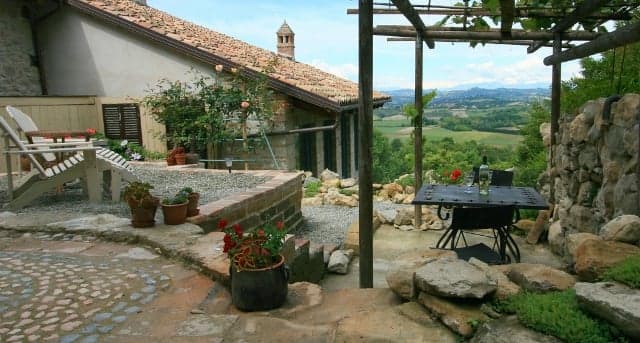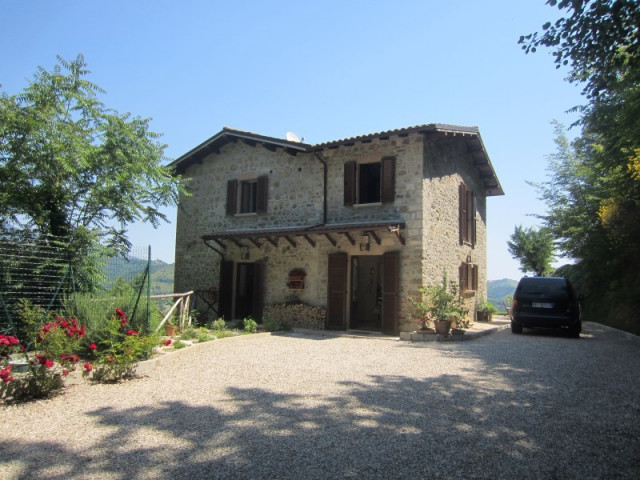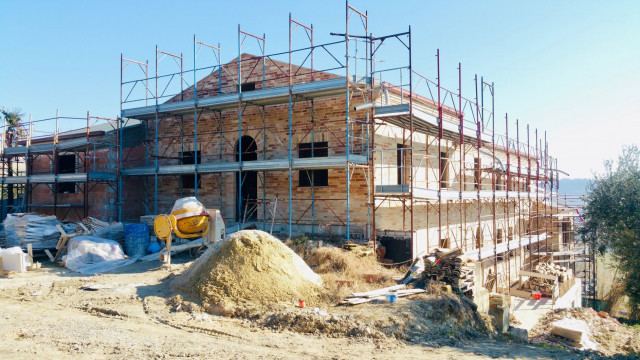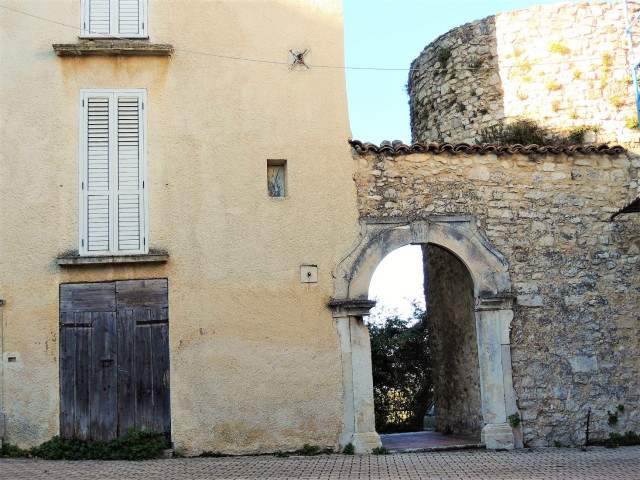How and where to find your dream renovation property in Italy

Searching for the ideal Italian property to renovate? We've got some expert tips on finding 'the one'.
Finding a bargain Italian property and turning it into your dream home – or a profitable holiday rental – is something many people dream of. But it’s not always easy to do, especially if you've never bought property in Italy before.
We recently shared a list of expert tips on renovating Italian properties but of course, you’ll have to find a house to renovate first.
So where exactly do you start? We asked local property experts to weigh in with their advice.
Where to look
The first task is to pinpoint a region depending on your requirements.
“Depending on your budget and the kind of property you’re looking for, you could opt for a countryside location with many farmhouses, or for an apartment or palazzo in one of the many old town centres that dot the peninsula," says Simone Rossi, Managing Director at Italian property portal Gate-away.com, "whether of small villages or major cities like Florence."

A farmhouse near Ascoli Piceno, Marche, completely renovated by its British owners. Photo: Gate-Away.com
But huge regional differences exist.
Rossi points out that Tuscany, for example, “doesn’t have many casolari (country houses) still in need of restoration, since it has been one of the most sought-after Italian region for decades, especially the so-called ‘Chiantishire’”
Instead, he recommends looking south.
“Just think of Basilicata or Molise, where you can choose from a wide range of housing solutions to be restored, in marvellous scenery, in less touristy areas,” he says.
“And keep an eye on Abruzzo, which is growing in popularity and has plenty of countryside houses to restore which are quite affordable,” he adds.
“It’s possible to find a nice farmhouse or a stone house to renovate in the countryside with prices starting from as little as 50,000 euros or less.”
READ ALSO: The best renovation properties you can buy in Italy for less than €50K
Local renovation expert Gary Edwards from D&G Design recommends the picturesque region of Le Marche, which he says is “a relatively undiscovered region of Italy that rivals its Tuscan neighbour with miles of rolling hills, medieval hilltop towns, a beautiful Adriatic coastline with 26 blue flag beaches, an abundance of authentic food and wine, fewer tourists than most other regions and a property market that offers homes for sale at a fraction of the price.”
He says the region has homes to suit all budgets and tastes.
“Rustic ruins ready for a full restoration can start at €15,000, while a 2 bedroomed villa with pool and views of the Sibillini mountains are available for around €295,000.”
These homes appeal to “the more adventurous buyer” and “anyone wanting a full immersion into traditional Italian life”, he says, considering that few people locally speak English.

A huge restoration project in Le Marche. Photo: D&G Design
But if you’ve got your heart set on the north of Italy, those regions shouldn’t be overlooked.
As one reader points out, there are corners of picturesque Piemonte where bargain renovation properties can still be found.
“I think that in our area there are still good prices to be found for fixer-upper houses,” says Toni Hilton, a reader who has restructured several properties in Monferrato, Piemonte, where the main draw is the spectacular landscape.
“I’ve noticed lately that prices for a total re-do - a house that needs work from roof to cellar and all of the impianti (plumbing/heating/electric) and new infissi (windows/doors), are lower than ever. “
“I think a lot of houses in poor state have come on the market in recent years, as elderly owners have died. Families don't want, or don't have the means to restructure them,” she explains.
Some houses, she adds, are even priced symbolically at less than 10,000. However the cost of buying a house, usually around 5,000, should be factored in too.
Finding the house
While most property searches are centred on online property websites and portals, Edwards says the best thing to do once you’ve found an area you love is to get to know it extremely well. Walk around, talk to people, and ask about properties for sale.
“Talk with people who know the area, or live in the area you are considering. Better still if you can find foreigners who bought and restored a ruin,” he says.
“Many hidden gems that are being sold privately may not be listed with local real estate agents.”

A property in Abruzzo in need of some TLC. Photo: propertyupto50k.com
If you’re living outside of Italy, he says “a test visit to areas you are drawn to” is essential.
“Check for local events or speakers who may be discussing real estate or renovation,” he says.
Hilton points out that not all houses are worth investing in, and that in her area at least, location is the biggest factor to consider.
“Out of every 50 properties that I see, there may be one that has a location worth investing in,” she says.“Here in Piemonte, that almost always means a great view and walking distance to a shop or café.”
Edwards advises any potential buyer to “speak with experts regarding the small print.”
“The local regulations, restrictions, licensing and government by-laws” should all be investigated before putting in any offers or getting too carried away with grand plans for restoration.
And Rossi says expert opinions can help uncover hidden treasures, too.
“When buying a house in Italy, it is a good idea to do a proper inspection to identify possible shortcomings, but also to establish if there are any valuable hidden architectural marvels to be discovered, especially if it was built several centuries ago, like frescoes, precious ornaments, or exposed beams or bricks.”
Have you renovated your own property in Italy? Do you have any of your own tips or stories to share? Get in touch!
Comments
See Also
Finding a bargain Italian property and turning it into your dream home – or a profitable holiday rental – is something many people dream of. But it’s not always easy to do, especially if you've never bought property in Italy before.
We recently shared a list of expert tips on renovating Italian properties but of course, you’ll have to find a house to renovate first.
So where exactly do you start? We asked local property experts to weigh in with their advice.
Where to look
The first task is to pinpoint a region depending on your requirements.
“Depending on your budget and the kind of property you’re looking for, you could opt for a countryside location with many farmhouses, or for an apartment or palazzo in one of the many old town centres that dot the peninsula," says Simone Rossi, Managing Director at Italian property portal Gate-away.com, "whether of small villages or major cities like Florence."

A farmhouse near Ascoli Piceno, Marche, completely renovated by its British owners. Photo: Gate-Away.com
But huge regional differences exist.
Rossi points out that Tuscany, for example, “doesn’t have many casolari (country houses) still in need of restoration, since it has been one of the most sought-after Italian region for decades, especially the so-called ‘Chiantishire’”
Instead, he recommends looking south.
“Just think of Basilicata or Molise, where you can choose from a wide range of housing solutions to be restored, in marvellous scenery, in less touristy areas,” he says.
“And keep an eye on Abruzzo, which is growing in popularity and has plenty of countryside houses to restore which are quite affordable,” he adds.
“It’s possible to find a nice farmhouse or a stone house to renovate in the countryside with prices starting from as little as 50,000 euros or less.”
READ ALSO: The best renovation properties you can buy in Italy for less than €50K
Local renovation expert Gary Edwards from D&G Design recommends the picturesque region of Le Marche, which he says is “a relatively undiscovered region of Italy that rivals its Tuscan neighbour with miles of rolling hills, medieval hilltop towns, a beautiful Adriatic coastline with 26 blue flag beaches, an abundance of authentic food and wine, fewer tourists than most other regions and a property market that offers homes for sale at a fraction of the price.”
He says the region has homes to suit all budgets and tastes.
“Rustic ruins ready for a full restoration can start at €15,000, while a 2 bedroomed villa with pool and views of the Sibillini mountains are available for around €295,000.”
These homes appeal to “the more adventurous buyer” and “anyone wanting a full immersion into traditional Italian life”, he says, considering that few people locally speak English.

A huge restoration project in Le Marche. Photo: D&G Design
But if you’ve got your heart set on the north of Italy, those regions shouldn’t be overlooked.
As one reader points out, there are corners of picturesque Piemonte where bargain renovation properties can still be found.
“I think that in our area there are still good prices to be found for fixer-upper houses,” says Toni Hilton, a reader who has restructured several properties in Monferrato, Piemonte, where the main draw is the spectacular landscape.
“I’ve noticed lately that prices for a total re-do - a house that needs work from roof to cellar and all of the impianti (plumbing/heating/electric) and new infissi (windows/doors), are lower than ever. “
“I think a lot of houses in poor state have come on the market in recent years, as elderly owners have died. Families don't want, or don't have the means to restructure them,” she explains.
Some houses, she adds, are even priced symbolically at less than 10,000. However the cost of buying a house, usually around 5,000, should be factored in too.
Finding the house
While most property searches are centred on online property websites and portals, Edwards says the best thing to do once you’ve found an area you love is to get to know it extremely well. Walk around, talk to people, and ask about properties for sale.
“Talk with people who know the area, or live in the area you are considering. Better still if you can find foreigners who bought and restored a ruin,” he says.
“Many hidden gems that are being sold privately may not be listed with local real estate agents.”

A property in Abruzzo in need of some TLC. Photo: propertyupto50k.com
If you’re living outside of Italy, he says “a test visit to areas you are drawn to” is essential.
“Check for local events or speakers who may be discussing real estate or renovation,” he says.
Hilton points out that not all houses are worth investing in, and that in her area at least, location is the biggest factor to consider.
“Out of every 50 properties that I see, there may be one that has a location worth investing in,” she says.“Here in Piemonte, that almost always means a great view and walking distance to a shop or café.”
Edwards advises any potential buyer to “speak with experts regarding the small print.”
“The local regulations, restrictions, licensing and government by-laws” should all be investigated before putting in any offers or getting too carried away with grand plans for restoration.
And Rossi says expert opinions can help uncover hidden treasures, too.
“When buying a house in Italy, it is a good idea to do a proper inspection to identify possible shortcomings, but also to establish if there are any valuable hidden architectural marvels to be discovered, especially if it was built several centuries ago, like frescoes, precious ornaments, or exposed beams or bricks.”
Have you renovated your own property in Italy? Do you have any of your own tips or stories to share? Get in touch!
Join the conversation in our comments section below. Share your own views and experience and if you have a question or suggestion for our journalists then email us at [email protected].
Please keep comments civil, constructive and on topic – and make sure to read our terms of use before getting involved.
Please log in here to leave a comment.